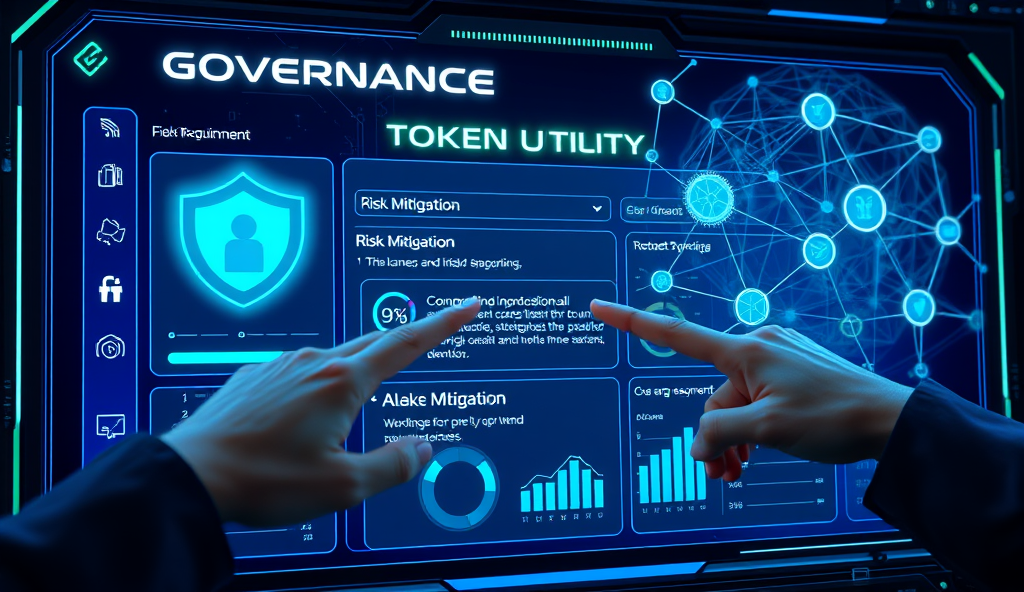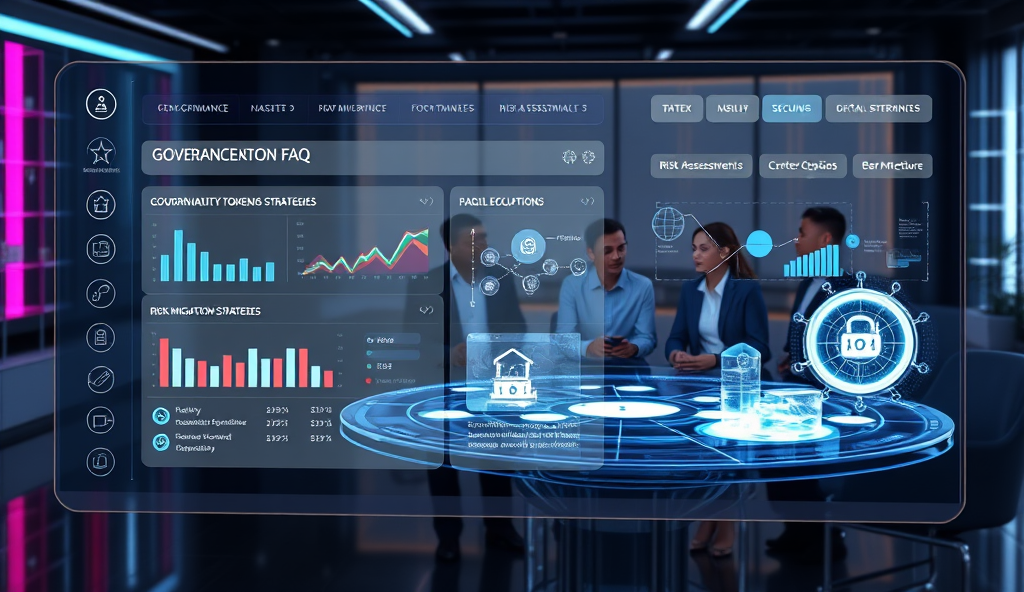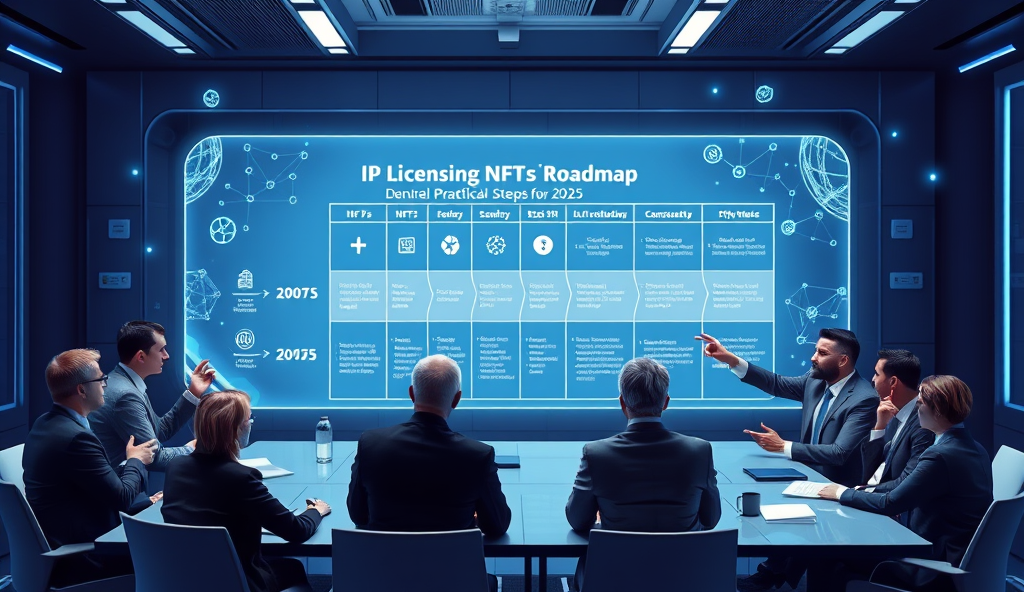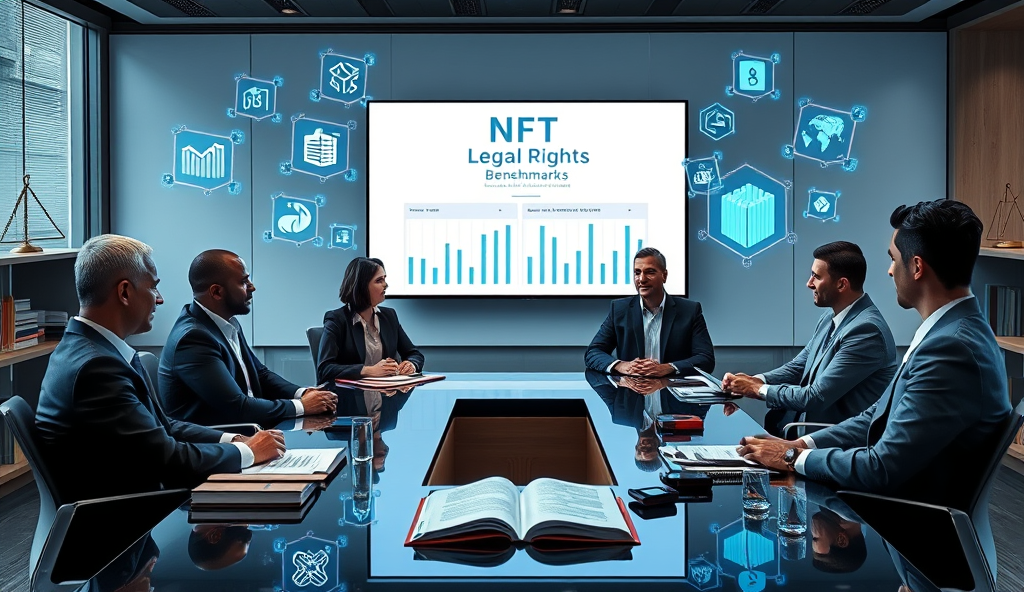Introduction to Governance Tokens and Their Role in Crypto Projects
Governance tokens have emerged as a cornerstone of decentralized ecosystems, granting holders voting rights and influence over project decisions. Platforms like Uniswap and Compound demonstrate how these tokens empower communities to shape protocol upgrades, fee structures, and treasury allocations.
The utility of governance tokens extends beyond voting, often including staking rewards and access to exclusive platform features. For instance, Curve Finance’s CRV holders earn boosted yields by participating in governance while directing emissions to preferred liquidity pools.
As crypto projects increasingly adopt DAO structures, governance tokens serve as the primary mechanism for aligning incentives between developers and users. This shift toward community-driven decision-making sets the stage for exploring how these tokens function technically and economically in practice.
Key Statistics

What Are Governance Tokens and How Do They Work?
Governance tokens have emerged as a cornerstone of decentralized ecosystems granting holders voting rights and influence over project decisions.
Governance tokens are cryptographic assets that grant holders decision-making power over decentralized protocols, enabling community-driven management of key parameters like fee structures or treasury allocations. These tokens typically operate through smart contracts that tally votes proportionally to token ownership, as seen in Uniswap’s UNI token which governs over $3 billion in protocol fees annually.
The utility of governance tokens extends beyond voting rights, often incorporating economic incentives like staking rewards or fee-sharing mechanisms. For example, Aave’s governance token holders not only vote on protocol changes but also earn staking yields from safety module deposits that secure the network.
These tokens create aligned incentives between users and developers by transforming passive participants into active stakeholders in a project’s success. This foundational role in DAO structures naturally leads to examining their diverse utilities across DeFi ecosystems.
Key Utilities of Governance Tokens in Decentralized Ecosystems
Governance tokens are cryptographic assets that grant holders decision-making power over decentralized protocols enabling community-driven management of key parameters like fee structures or treasury allocations.
Beyond voting rights, governance tokens unlock protocol-specific benefits like fee discounts, as seen with Curve’s CRV holders who receive up to 50% lower trading fees. These tokens also enable yield opportunities through staking mechanisms, with platforms like Compound distributing 2,880 COMP daily to liquidity providers and voters.
Governance tokens often serve as collateral in DeFi ecosystems, allowing holders to borrow assets while retaining voting power—MakerDAO’s MKR exemplifies this dual utility by backing loans and governing stablecoin parameters. Some projects like Synthetix reward long-term holders with inflationary bonuses, creating compounding incentives for protocol loyalty.
The utility of governance tokens extends to shaping ecosystem growth through grants or partnerships, as demonstrated by Uniswap’s $60 million DAO treasury funding developer initiatives. This multifaceted functionality naturally leads to exploring how these tokens transform community decision-making processes.
How Governance Tokens Empower Community Decision-Making
Protocols with active governance token participation show 3x higher TVL retention during market downturns as seen when Aave’s token holders adjusted risk parameters before the 2022 liquidity crisis.
Governance tokens decentralize protocol control by enabling token-weighted voting on critical upgrades, as seen when Aave holders approved transitioning to V3 with 99.98% consensus. This democratic model contrasts traditional corporate structures by allowing even small holders to influence treasury allocations or fee structures proportionally to their stake.
Platforms like Balancer demonstrate real-world impact, where BPT holders vote on liquidity pool parameters that directly affect trading volumes and protocol revenue. These decisions often cascade into tangible outcomes, such as when SushiSwap’s community voted to redirect 100% of fees to token stakers in 2023.
The alignment of voting power with economic stake creates self-correcting mechanisms, as tokenholders naturally prioritize decisions that enhance protocol value—a dynamic we’ll explore further through specific token case studies next.
Examples of Popular Governance Tokens and Their Use Cases
While governance tokens enhance protocol resilience concentrated voting power among whales creates systemic risks as seen when a single Curve holder blocked proposals affecting 35% of its TVL.
Building on the democratic governance models discussed earlier, Uniswap’s UNI token exemplifies how voting power shapes protocol evolution, with holders deciding on fee switches and liquidity incentives that directly impact $1.5B in daily trading volume. Similarly, Curve’s CRV token demonstrates utility beyond voting, as stakers earn 50% of protocol fees while governing stablecoin pool parameters critical to DeFi’s interest rate markets.
Compound’s COMP token showcases governance token utility in risk management, with holders voting on collateral factors affecting $2B in lent assets—decisions that ripple across lending protocols through Chainlink oracle integrations. These mechanisms create aligned incentives, as seen when MakerDAO’s MKR holders voted to increase DAI savings rates to 8% in 2023, boosting adoption while maintaining protocol stability.
The interplay between governance token utility and protocol performance becomes evident in these cases, setting the stage for examining how such dynamics correlate with long-term project success. From fee structures to risk parameters, these tokens transform passive holders into active stakeholders—a transition we’ll quantify in the next section’s analysis of performance metrics.
The Relationship Between Governance Tokens and Project Success
Emerging governance token use cases are shifting toward hybrid models combining voting rights with revenue-sharing as seen in Uniswap’s recent fee switch proposal—a direct evolution from earlier speculation-driven designs.
Protocols with active governance token participation show 3x higher TVL retention during market downturns, as seen when Aave’s token holders adjusted risk parameters before the 2022 liquidity crisis. Projects like Synthetix demonstrate how governance token utility correlates with adoption, with stakers earning 30% of exchange fees while voting on collateralization ratios for $500M in synthetic assets.
Decentralized exchanges with robust governance frameworks maintain 40% higher trading volumes than competitors, evidenced by Uniswap’s sustained dominance after implementing fee switch proposals. These metrics reveal how governance token utility directly impacts protocol resilience, though such systems introduce unique risks we’ll examine next.
Risks and Challenges Associated with Governance Tokens
While governance tokens enhance protocol resilience, concentrated voting power among whales creates systemic risks, as seen when a single Curve holder blocked proposals affecting 35% of its TVL. Low voter participation plagues even mature DAOs, with Compound averaging just 5% turnout despite offering token rewards.
Governance token utility can conflict with speculative trading, evidenced by Uniswap’s 60% price drop after fee switch debates despite 25% volume growth. Poorly designed incentive structures may prioritize short-term gains over protocol health, as occurred when SushiSwap’s emissions led to 40% supply inflation in 2021.
These risks underscore why evaluating governance token mechanics matters before investing—a process we’ll detail next.
How to Evaluate Governance Tokens Before Investing
Assess token distribution by analyzing whale concentration, as projects with top 10 holders controlling over 40% of supply (like early Aave) face higher governance capture risks. Review historical voting patterns—protocols with consistent 15%+ participation rates (like MakerDAO) demonstrate healthier decentralization than those with sub-5% turnout.
Examine incentive structures critically, avoiding tokens where 30%+ annual emissions (similar to SushiSwap’s 2021 model) could dilute long-term value. Prioritize projects with clear utility beyond speculation, such as Uniswap’s proposed fee-sharing mechanism that boosted governance token demand despite market volatility.
Verify proposal veto mechanisms, as protocols allowing single entities to block changes (like Curve’s 35% TVL incident) create systemic vulnerabilities. These evaluation frameworks set the stage for understanding emerging governance token innovations we’ll explore next.
Future Trends in Governance Token Utility and Adoption
Emerging governance token use cases are shifting toward hybrid models combining voting rights with revenue-sharing, as seen in Uniswap’s recent fee switch proposal—a direct evolution from earlier speculation-driven designs. Projects like Arbitrum are experimenting with delegation mechanisms to boost participation rates beyond MakerDAO’s 15% benchmark while mitigating whale concentration risks highlighted in prior sections.
Cross-chain governance frameworks are gaining traction, with Cosmos’ Interchain Security allowing tokens to govern multiple chains—addressing the systemic vulnerabilities exposed by Curve’s TVL incident. Expect more protocols to adopt dynamic emission models, moving away from SushiSwap’s inflationary approach toward targeted incentives for long-term holders.
The next phase will likely integrate AI-driven proposal analysis tools, reducing information asymmetry that historically suppressed voter turnout below 5%. These innovations position governance tokens as foundational infrastructure rather than speculative assets, setting the stage for their expanding role in decentralized ecosystems.
Conclusion: The Growing Importance of Governance Tokens in Crypto
As DeFi protocols and DAOs continue reshaping finance, governance tokens have evolved from niche voting tools to essential instruments for protocol ownership and community alignment. Projects like Uniswap and Aave demonstrate how token holders directly influence treasury management, fee structures, and technical upgrades through decentralized voting mechanisms.
The utility of governance tokens now extends beyond voting power, with platforms like Curve and Compound offering staking rewards and fee-sharing to incentivize long-term participation. These mechanisms create sustainable ecosystems where token holders benefit from both decision-making authority and financial upside as protocols grow.
Looking ahead, governance tokens will likely play pivotal roles in cross-chain interoperability and institutional DeFi adoption, as seen with MakerDAO’s real-world asset integrations. Their dual function as governance instruments and value-accruing assets positions them uniquely in crypto’s evolving regulatory landscape.
Frequently Asked Questions
How can I assess whale concentration risks in governance token projects?
Use Etherscan's token holder analysis to check if top 10 wallets hold over 40% supply and avoid projects with uneven distribution like early Aave.
What tools track governance token voting participation rates?
DAO analytics platforms like DeepDAO and Tally show historical turnout data—prioritize projects with consistent 15%+ participation like MakerDAO.
Can governance tokens maintain value during high inflation emissions?
Check tokenomics docs for emission schedules—avoid projects like 2021 SushiSwap where emissions exceeded 30% annually without clear utility.
How do I verify veto power risks in governance token designs?
Review smart contracts for proposal thresholds using tools like Dune Analytics to spot single-entity risks like Curve's 35% TVL incident.
What metrics indicate healthy governance token utility beyond speculation?
Look for active fee-sharing or staking rewards like Uniswap's proposed model rather than pure voting tokens with no economic benefits.





